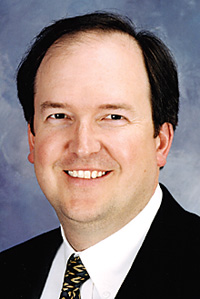WASHINGTON -- CMS issued a new national coverage determination for power wheelchairs May 6 that officially dropped the controversial 'bed-or-chair-confined' criteria but maintained the equally disappointing 'in-the-home' language.
The new coverage criteria determines eligibility for mobility equipment by evaluating a beneficiary's ability to accomplish mobility related activities of daily living, including toileting, eating, dressing, grooming and bathing. It also establishes a tiered system where clinicians must consider the medical necessity on a full range of products -- from canes to walkers to scooters to power wheelchairs.
Industry groups called this functional assessment a step in the right direction. However, the inclusion of in-the-home -- the fact that increased mobility was not mentioned itself as an activity of daily living and the continued ambiguity of documentation requirements drew criticism from many.
"Despite clinician recommendations that 'mobility for mobility's sake' is an important medical reason to have a wheelchair, there still is not a recognition that people need these products to do their everyday living," said Invacare President and CEO Mal Mixon. "They continue to define living as staying inside the house and everyone in the real world knows it's all about getting people in to the mainstream to participate fully in life."
"The in-the-home restriction is evidently something we are going to have to handle legislatively and spend a lot more money, time and effort to get them to recognize what the rest of the world knows already," he added.
The actions that CMS calls mobility-related activities of daily living, has been called very limiting and could impact those patients who are the most disabled and who already require caregiver help for most of their needs.
"It's a very pragmatic way of assessing whether someone needs mobility assistance -- are they able to perform certain activities," said Cara Bachenheimer, Invacare's vice president of government relations. "And, while we may think their list is limiting, it's a significant step forward from saying bed-or-chair-confined."
The NCD is part of CMS's larger three-pronged approach focused on improving coverage, payment and quality of suppliers for power wheelchairs and other mobility devices.
CMS was expected to release a revised CMN, the final face-to-face physician exam requirement, the revised POV policy and documentation requirements shortly after the NCD. In February, it introduced 49 new power wheelchair codes that will take effect Jan. 1, 2006.
"We are very hopeful that once we see the revised CMN and the face-to-face rule that they will provide additional clarity to bring this coverage policy into better focus and provide a more clear coverage policy than what we are looking at today," said Seth Johnson, Pride Mobility's director of government affairs.
In the meantime, the DMERC medical directors are expected to release interim guidance to suppliers on billing for equipment under the new NCD, said Johnson. This information should help providers during the new CMN's upcoming comment period.
Clear and comprehensive documentation requirements are also imperative in completing this process, said a Restore Access to Mobility Partnership press release.
"Documentation really is the big black hole," said Bachenheimer. "The need for some greater detail is critical. That's' where the rubber hits the road for the individual supplier.




Comments